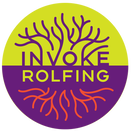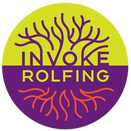What to expect
|
|
Will it hurt?
Rolfing® should not be painful. There may be moments of intensity, but the dialogue between us during the session ensures attention to your boundaries and pain threshold. I use a variety of techniques and often elicit your awareness to provide an easy opportunity for you to communicate any discomfort. What is a typical session? We begin each session with a check-in, so I can hear your story and understand where you are in your body at that moment. We then move into body reading: you walk and move in different ways to assess any restrictions and/or freely-moving areas of your body. Next, we will move to the table where we will use a combination of hands-on manual therapy and movement education to work with your specific needs. The sessions will usually end with a reassessment of movement and a discussion about any changes either of us have observed. The initial session will be about 75 minutes and subsequent sessions about 60 minutes. What to wear? Typical attire can range from underwear, shorts, workout pants, tank top, bra, t-shirt, etc. Access to your skin is great, but your comfort is essential. Do I have to do the 10 Series? You do not need to do a 10 Series. Many people experience significant benefits from one or two Rolfing® sessions. However, the longest-lasting and most structurally integrative work is accomplished through the 10 Series. Most often, clients in a 10 Series will receive a session every 1-3 weeks; depending on your needs and your individual body. Is Rolfing® a type of massage? Rolfing® may look or feel similar to a massage, but there are several different components. A massage is designed to relax muscles, move energy throughout the body, and will often leave you feeling energized and/or relaxed. While Rolfing® may also leave you feeling energized or relaxed, it is different in that the goals are to make lasting changes to your structure and movement patterns. Rolfing® focuses on balancing your whole body in gravity to create more ease with movement and improve posture. |
|
|
|
|


